
Owner/Installer Responsibility
The owner is advised to be at home during the installation for consultation/direction. The owner and installer should
discuss installation and layout to maximize satisfaction. If this is not possible, consultation should be done prior to
installation. Installers should be familiar with installation guidelines from National Wood Flooring Association
(woodfloors.org). The owner/installer assumes all responsibility for product quality of completed installation.
PERFORM PRE-INSTALL INSPECTION. FOR CLAIMS PURPOSES, YOU ARE ALLOWED TO OPEN UP TO 4 BOXES FOR
PRODUCT INSPECTION. DO NOT OPEN ALL THE BOXES. OPENING ALL THE BOXES CONSTITUTES YOUR
ACCEPTANCE OF THE PRODUCT. INSPECT ALL THE PLANKS IN THESE 4 BOXES CAREFULLY. EXAMINE FLOORING
FOR COLOR, FINISH AND QUALITY. IF YOU DISCOVER THAT PRODUCTS ARE DEFECTIVE, OR IF MATERIAL IS
QUESTIONABLE, YOU SHOULD CONTACT THE RETAILER. IF YOU ARE SATISFIED, PROCEED WITH INSTALLATION.
Prior to installation, rack up planks from several boxes to ensure uniform distribution of colors, shades and characters
in the installed flooring. Planks having similar widths should be placed together in the same row to minimize gaps
between boards.
Bamboo floors are natural products containing natural variations. Variations in color, tone, grain, streaks, nodal marks and
other characters are found from plank to plank. Similar variations exist between samples, pictures and purchased flooring.
They are normal and it does not mean the product is defective.
Flooring to be installed in one large area should be purchased at the same time. Product purchased at a later time than the
first purchase may vary beyond your expectations.
Accessories, trims and moldings are manufactured to coordinate with the varied appearances of the floor planks.
Any exact matches are coincidental. Non-matching accessories are not defective products.
This product is manufactured according to strict quality standards. In the event that defects are discovered in the field, the
industry standards permit a defect tolerance not to exceed 5%. The defects may be of any type, whether manufactured or
natural. Order an additional 5% extra for cutting wastage and grading allowances (10% for diagonal installations).
During installation, inspect the planks continuously. Defects that can be seen from a standing position should be cut
off or held out. Installing defective planks implies acceptance.
Squeaking and clicking noises are the result of interactions among flooring, joists and subfloors when they move.
Limiting the movements of the flooring system usually eliminates most of these noises. Sometimes, it is impossible to
eliminate them completely and minor squeaking or clicking noises are to be accepted as normal flooring phenomenon.
Minor scratches can generally be repaired with the use of putty, stain or filler. It is an industry standard practice of
flooring installation and it should be accepted as normal by the home owner.
If You Need More Information: To assure the warranty is not inadvertently voided, before proceeding with any
activity that is not covered in this manual, please contact our Technical Support Department.
Job Site Condition
Prior to installation, the installer must ensure that at the time of installation, the job site conditions including
subfloor/substrate, ambient temperature and relative humidity, and all impacting variables will not negatively
affect floor. The manufacturer will decline responsibility for damages associated with improper installation or poor
site conditions.
Storage and Conditions
Do not store flooring in uncontrolled environmental conditions. For example, garages and exterior patios are not
acceptable areas to store flooring. Handle and unload bamboo flooring with care and store within the environmentally
controlled site in which it is expected to perform. Flooring stored on concrete slab should be elevated at least four
inches to allow air circulation under cartons.
Existing Home
Existing home should have a consistent room temperature of 60°F-80°F and relative humidity (RH) of 35%-55%.
Continual deviation from these conditions will affect the dimensions of flooring, especially bamboo. During heating
season, humidity may be much lower than the acceptable range. During the heating season, a humidifier is recommended
to prevent excess shrinkage in bamboo flooring due to low humidity levels. During the non-heating season, humidity levels
can be maintained by using an air conditioner, dehumidifier, or by turning on your heating system periodically.
New Construction or Remodel
All work involving water, such as pouring basement concrete floors, drywall and plasterwork, plumbing, etc. must be
completed well in advance of the floor delivery. Ensure that the building is enclosed. Where building codes allow,
permanent heating and/or air conditioning systems should be operating at least five days preceding installation and
should be maintained during and after installation. If it is not possible for the permanent heating and/or air conditioning
system to be operating before, during and after installation, a temporary heating and/or dehumidification system that
simulate normal living (occupied) conditions can enable the installation to proceed until the permanent heating and/or
air conditioning system is fully operational.
Your job site should have a consistent temperature of 60°F-80°F and relative humidity (RH) of 35%-55% which should
be maintained continuously thereafter.
Basements and Crawl Spaces
Concrete slab or ground must be dry. The ground in the crawl spaces must be completely covered using 6 mil black
polyethylene. Crawl space clearance between the earth and underside of joists should be no less than 18 inches and the
perimeter vent area should be equal to 1.5% of the total square footage of the crawl space or as mandated by code.
Concrete Subfloor Requirements
It must have minimum rated strength of 3000 psi.
It must be level to within 1/8" in a 6 foot span or 3/16" in a 10 foot span; no bumps or low spots. High spots can be
removed by grinding; depressions can be filled with patching compound formulated for use in floor installation.
It must be clean; no construction debris, soil, mud and any other objects on or adhering to the floor; if necessary, scrape
and sweep away before the installation; no protrusions of nails, debris, metals should remain.
New concrete slab must cure for at least 60 days. It must have a minimum 10 mil polyethylene sheet between the
ground and the concrete.
It must meet concrete moisture requirement below.
It must be free from moisture related conditions which can damage the installed flooring.
Light Weight Concrete
It is concrete which rated strength is less than 3000 psi.
Perform a quick check by drawing a nail across the top; if it leaves indentation, it is probably light concrete.
For glue-down application, the concrete must possess shear strength greater than the glue. If concrete rated psi is
unknown, contact the adhesive manufacturer for guidance.
Concrete Moisture
All concrete subfloors should be tested for moisture content and the results documented. Visual checks are not reliable.
Perform tests at locations around exterior doorways, near walls containing plumbing, near foundation walls and in the
center of the room. Minimum sample size is 3 samples per 1000 square feet of area and one test for every additional
1000 square feet thereafter.
Its moisture content should meet one of the following criteria below:
• 4.5% when tested using Tramex Concrete Moisture Encounter.
• Less than 3 pounds per 1000 square feet per 24 hours when using Calcium Chloride test (ASTM F 1869).
• 75% when using Relative Humidity Testing (ASTM F-2170).
Please note: Concrete moisture content may be acceptable the time of the test. These tests do not guarantee a
perpetual “dry” concrete slab. The concrete slab moisture content can vary at other times of the year.
We are not responsible for moisture related damage to installed flooring.
Wood Subfloor Requirements
It must be clean; no presence of construction debris, soil, mud and any other objects on or adhering to the floor; no
protrusions of nails, debris, metals should remain. If necessary, scrape and sweep the subfloor before the installation.
It must be structurally sound and stable; no movements or squeaks; no loose panels or loose nails; no signs of ply
de-lamination or other damages. Repair all shortcomings before installation.
It must be flat; no visible bumps or low spots; the subfloor should be flat to within 1/8" in 6 feet span or 3/16" in 10 feet.
Test for moisture using reliable moisture meter. Perform tests at locations around exterior doorways, near foundation
walls, near walls containing plumbing lines and in the center of the room. Measure 20 locations per 1000 square feet.
Moisture content of subfloor should be less than 12%. Moisture content difference between subfloor and flooring
should be 2% or less.
WARNING: CALIFORNIA RESIDENTS
This product can create wood dust and emit formaldehyde of which are known to the State of California to cause cancer.
CAUTION: ASBESTOS IN EXISTING FLOOR
Home Decorators Collections product does not contain asbestos. Existing installed resilient flooring and asphaltic
adhesive may contain asbestos fillers or crystalline silica. Do not sand, dry sweep, dry scrape, drill, saw,
bead-blast, or mechanically chip or pulverize existing resilient flooring, backing, lining felt, asphaltic
“cutback” adhesive or other adhesive. See “Recommended Work Practices for Removal of Resilient Floor
Coverings” (rfci.com) for detailed information and instructions on removing all resilient covering structures.
CAUTION: WOOD DUST
Sawing, sanding and machining this product can produce wood dust. It can cause respiratory, skin and eye irritation.
Avoid prolonged exposure to wood dust. Power tools should be equipped with a dust collector. If possible, perform
wood dust generating activities outdoors. If high dust levels are encountered, use an appropriate NIOSH-designated
dust mask.
Acclimation and In-service Conditions
Acclimation is the process of adjusting (conditioning) the moisture content of bamboo flooring to the environment
in which it is expected to perform. The bamboo flooring is fully acclimated when its moisture content and
dimensions (width and length) are stable. For example, the averaged dimensions and moisture content remain
constant for 3 consecutive days. Bamboo flooring must acclimate for as long as necessary to reach fully
acclimated stage. Acclimation time varies depending on geographical area, interior climate control and time of
the year. Minimum acclimation time is 72 hours. In open box, open plastic wrap.
Elevate planks from the floor by placing them on 2"X 2" lumber or equivalence. Place spacers (3/4" to 1" sticks)
between each layer or cross stack the layers for maximum exposure to ambient conditions. Acclimation
temperature range is 60°F-80°F and relative humidity (RH) of 35%-55%. Conditions in which the floor was
acclimated should be maintained continuously thereafter. Document as much acclimation information as
possible below.
Products Included
Engineered Bamboo HDF
Click-Lock joints
Installation Instructions
Engineered Bamboo HDF Flooring
For Assistance, Call: 1-800-986-3460
Homedepot.com/homedecorators
Grade Levels
Above Grade / On Grade
Below Grade
Installation Method
Floating
Full Spread Glue
Date: ______________________________________________________________________
Relative Humidity (%):___________________________________________________________
Temperature (ºF):______________________________________________________________
Subfloor Type:________________________________________________________________
Subfloor Avg. Moisture Content (%):__________________________________________________
Acclimation Period:_____________________________________________________________
Pre-acclimation Flooring Avg. Moisture Content (%): _______________________________________
Pre-acclimation Flooring Width: ____________________________________________________
Pre-acclimation Flooring Length: ___________________________________________________
Post-acclimation Flooring Avg. Moisture Content (%) _______________________________________
Post-acclimation Flooring Width:____________________________________________________
Post-acclimation Flooring Length:___________________________________________________
8" X 20" - English HDF Bamboo Flooring - Front - 3/10/14
Bond Failure
Bond failure is NOT flooring product defect. Most installation failures, including bond failure, result from jobsite moisture.
Do not unpack or deliver flooring to the jobsite until moisture problems are corrected. Read adhesive manufacturer’s
instruction carefully. Certain wood flooring adhesives may have special requirements and limitations of use. Some existing
floor may not be acceptable. Not following the adhesive manufacturer’s recommendations can lead to installation failure
or product damage and will void your warranty.
Glue Spots on Face of Finished Floor
Adhesive can damage the floor’s finish, especially when it has dried. It is extremely important to take precautionary steps
NOT to leave finger prints or footprints marks on the face of the board. Preventive actions include wearing gloves when
spreading glue and discarding the glove when finished. Use clean gloves before placing the floor planks in the adhesive
layer. If glue comes in contact with the face of the board, remove immediately with the adhesive remover recommended
by the adhesive manufacturer. Use clean towels, changing frequently to prevent haze and adhesive residue. If the spot
removal damages the appearance of the boards, replace the board.
Helpful Pointers
General Tips:
• Make sure your work area is well lit. Good visibility ensures that color is consistent and that visually defective planks
are detected and removed.
• The minimum length of the first and last plank is 12". If the last plank will be less than 12", adjust the length of the first
plank. The remainder of the last plank can be used as a starter board on the following rows.
• Using a shorter piece at undercut door jams will help when fitting flooring in place.
Glue-Down Installation Tips:
• ALWAYS REFER TO THE SPECIFIC INSTRUCTIONS ON THE FLOORING ADHESIVE LABEL. The information given here is
for typical installation. Adjust it according to adhesive manufacturer’s instruction.
• Dry-lay means the glue has to set before placing floor planks in it. Wet-lay means the glue does not need to set before
placing floor on it.
• Use trowel design as specified by adhesive manufacturer.
• Continuously check the transfer of adhesive THROUGHOUT the installation process. If the adhesive no longer transfers
to the back of the flooring material, it must be removed and new adhesive applied.
• Work your way out of the room.
•
After the installation is completed, keep the floor free from daily foot traffic for a minimum of 24 hours to allow
adhesive to properly cure.
Cutting the Last Row to Width:
• Most often the entire length of the last row will need to be cut so that it is narrow enough to fit the remaining space.
•
Measure the distance between the floor face edge (exclude the tongue) to the wall. Subtract 1/2" from this
measurement for expansion gap. Draw a line. Cut through the line. Discard the excess piece. Proceed with installation.
Pre-install Activities
• Subfloors should be in clean condition.
• Understand the parts of the locking part of the flooring plank. The tongue is the thinner extension coming out of the
side of the planks. The groove is the wider extension coming out of the other side of the floor plank. The ends do not
have tongue and groove. There is an upper drop-lock end on one side and a lower-drop lock end on the other side.
Safety and Health Precautions
Power tools can be dangerous. Operate in strict accordance to manufacturer’s operating instructions and safety
precautions. Unsafe and improper use can cause serious injuries.
Avoid inhalation and exposures to wood dust by mechanical means and by wearing personal protective equipment.
Wear appropriate personal protective equipment (PPE) which include NIOSH or OSHA approve dust masks, safety
goggle and work gloves.
• Lay out several cartons. Randomly rack planks to ensure good color and shade mixture and end joint spacing.
Minimum end stagger is 6". Inspect plank quality and grading.
• Lay out trim moldings in advance and find planks whose shade closely matches. Set these aside for future use.
• Remove existing base, shoe molding or threshold carefully. They can be used to cover the 1/2" expansion gap
left around the edge of the room.
• Undercut doors and casings using a handsaw laid flat on a piece of scrap flooring.
•
Install the underlayment (if used) parallel to the flooring according to the underlayment manufacture
instruction. Any overlap (top) should be on the same side as the groove of the flooring so that the floor planks
will slide smoothly into place. Tape all seams. Secure the underlayment material as necessary to prevent
excessive movement.
Particle Board or Fiber Board Only for floating installation.
Existing Floors
Installation over existing floor requires the installer to consider potential issues related to moisture damage, adhesive
failure and fastener failure. Contact the adhesive and fastener manufacturers respectively for their specific
instructions, recommendations and requirements. Acceptable floor coverings include: solid hardwood, linoleum,
terrazzo, ceramic tile and other “moisture sealing floors.” Unacceptable floor coverings include: carpet, needle punch
felt, edge glued linoleum and other “moisture absorbing flooring.”
Radiant Heated Subfloor
This product can be installed over radiant heated subfloor. Operating surface temperature must be less than 84°F.
Decrease temperature before installation. Increase temperature gradually after installation. Glue down installation may
require additional installation requirement. Contact glue manufacturer for specific recommendation. Contact heater
manufacturer for specific installation instruction.
Moisture Barrier and Moisture Retarder
Concrete Subfloor: For floating installation, use 6 mil polyethylene film or other means with equivalent permeability.
Overlap the edge seams and tape it together. Extend moisture barrier up to the wall about 1 inch high. For direct glue
installation, use a moisture barrier if moisture level exceeds requirement (see Concrete Moisture section).
Wood Subfloor: Use asphalt-saturated kraft paper or #15 or #30 felt that meets ASTM Standard D4869 or UU-B-790,
Grade D. Overlap along the edge seams 2"- 4" wide. This retards moisture movement from below. Extend the moisture
retarder to about 1" from the walls. Secure to the subfloor as necessary.
Sound Control Underlayment
Check with sound control manufacturer for application guidelines. Generally, the less compressive underlayment is preferred.
Expansion Gap
Required gap width is 1/2". It is required around the perimeter of the floor and between floor and all vertical
obstructions. Do not place permanently mounted structures such as kitchen counter/cabinet on the installed floor.
Transition Molding
Floating installation, transition T-molding is required in the following cases: floor spanning greater than 35 feet in length
or width; floor areas interrupted by wall sections extending out of the wall; floor areas which are not rectangular; wall
openings-with or without door; L shaped rooms or otherwise not rectangular rooms requires T-molding to split it into
rectangular sections.
Adhesive
Use premium flooring adhesive which is non-water based, formulated for engineered bamboo flooring installation.
Preferred type: moisture cure urethane floor glue.
Tools and Materials Basics
Tape measure • Moisture meter (wood, concrete or both) • Chalk line & chalk • Hammer • Electric power saw • Carbide
tipped saw blade for fine cut • NIOSH-designated dust mask • Hand saw or jamb saw • Eye protection • Straight edge
or Spacers • Pry Bar • Mallet • Broom • Color matched wood putty • Tapping block • Pull bar
Additional Supplies for Glue-Down Method: Flooring adhesive • Trowels • Adhesive remover for selected adhesive
• Clean rags • Weight roller • 3M Blue tape
Plywood or Oriented Strand Board (OSB) Specifications
On truss/joist spacing of 16" (406mm) O/C or less, the industry standard for single-panel subflooring is minimum 5/8"
(19/32", 15.1 mm) CD Exposure 1 plywood subfloor panels (CD Exposure 1) or 23/32" OSB Exposure 1 subfloor panels,
4’ x 8' sheets. Expansion gap between panels should be 1/8" (3 mm). If panels are not tongued and grooved and there
is not sufficient spacing or is inadequate, cut in the required spacing with a circular saw. Do not cut in expansion space
on tongue and groove panels.


 1
1
 2
2
Home Decorators Collection YY3004C Installation guide
Home Decorators Collection YY3001 Installation guide
Home Decorators Collection YY3004DD Installation guide
Home Decorators Collection YY2017AD Installation guide
Home Decorators Collection YY3004D Installation guide
Home Decorators Collection YY3004C Installation guide
Home Decorators Collection YY2009GD Installation guide
Home Decorators Collection YY2001AP Installation guide
Home Decorators Collection YY2017CP Installation guide
Home Decorators Collection AM1312E Installation guide
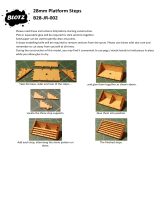 BLOTZ B28-JR-002 Assembly Instructions
BLOTZ B28-JR-002 Assembly Instructions
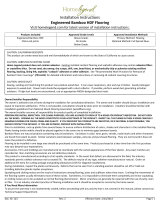 Home Legend HL265H Installation guide
Home Legend HL265H Installation guide
GREENWOOD LOA2496MJA-RH User manual
 Home Legend HL267-13 Installation guide
Home Legend HL267-13 Installation guide
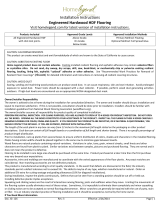 Home Legend HL154H Installation guide
Home Legend HL154H Installation guide
 Home Legend HL17 Installation guide
Home Legend HL17 Installation guide
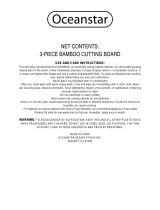 Oceanstar CB1156 User guide
Oceanstar CB1156 User guide
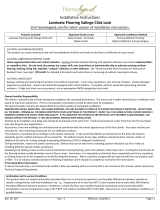 Home Legend HL1057 Installation guide
Home Legend HL1057 Installation guide
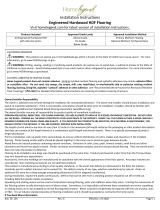 Home Legend HL196H Installation guide
Home Legend HL196H Installation guide
 Home Legend HL811 Installation guide
Home Legend HL811 Installation guide










